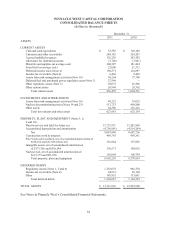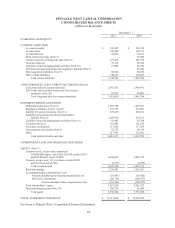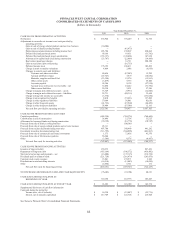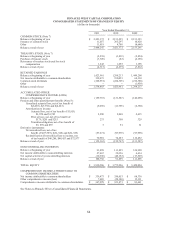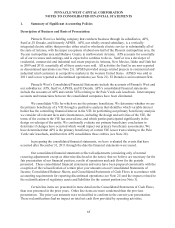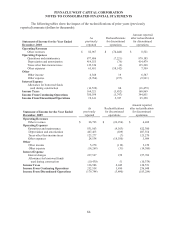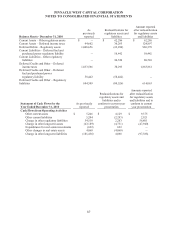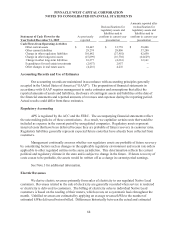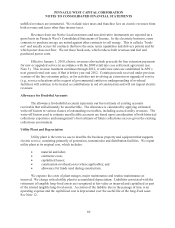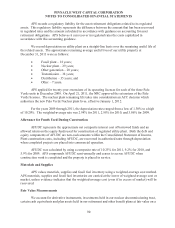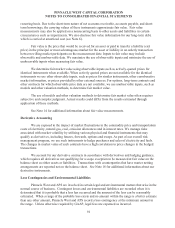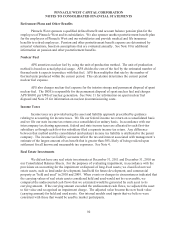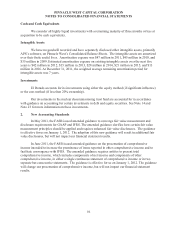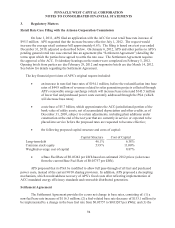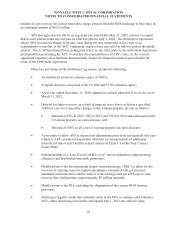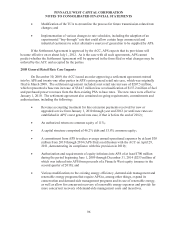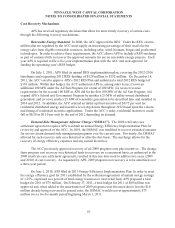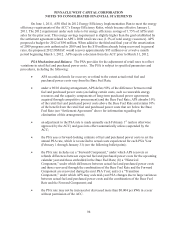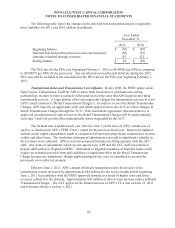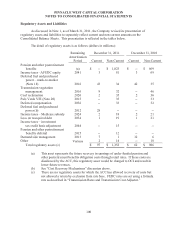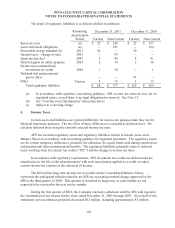APS 2011 Annual Report Download - page 116
Download and view the complete annual report
Please find page 116 of the 2011 APS annual report below. You can navigate through the pages in the report by either clicking on the pages listed below, or by using the keyword search tool below to find specific information within the annual report.PINNACLE WEST CAPITAL CORPORATION
NOTES TO CONSOLIDATED FINANCIAL STATEMENTS
91
recurring basis. Due to the short-term nature of net accounts receivable, accounts payable, and short-
term borrowings, the carrying values of these instruments approximate fair value. Fair value
measurements may also be applied on a nonrecurring basis to other assets and liabilities in certain
circumstances such as impairments. We also disclose fair value information for our long-term debt,
which is carried at amortized cost (see Note 6).
Fair value is the price that would be received for an asset or paid to transfer a liability (exit
price) in the principal or most advantageous market for the asset or liability in an orderly transaction
between willing market participants on the measurement date. Inputs to fair value may include
observable and unobservable data. We maximize the use of observable inputs and minimize the use of
unobservable inputs when measuring fair value.
We determine fair market value using observable inputs such as actively-quoted prices for
identical instruments when available. When actively quoted prices are not available for the identical
instruments we use other observable inputs, such as prices for similar instruments, other corroborative
market information, or prices provided by other external sources. For options, long-term contracts and
other contracts for which observable price data are not available, we use unobservable inputs, such as
models and other valuation methods, to determine fair market value.
The use of models and other valuation methods to determine fair market value often requires
subjective and complex judgment. Actual results could differ from the results estimated through
application of these methods.
See Note 14 for additional information about fair value measurements.
Derivative Accounting
We are exposed to the impact of market fluctuations in the commodity price and transportation
costs of electricity, natural gas, coal, emission allowances and in interest rates. We manage risks
associated with market volatility by utilizing various physical and financial instruments that may
qualify as derivatives, including futures, forwards, options and swaps. As part of our overall risk
management program, we use such instruments to hedge purchases and sales of electricity and fuels.
The changes in market value of such contracts have a high correlation to price changes in the hedged
transactions.
We account for our derivative contracts in accordance with derivatives and hedging guidance,
which requires all derivatives not qualifying for a scope exception to be measured at fair value on the
balance sheet as either assets or liabilities. Transactions with counterparties that have master netting
arrangements are reported net on the balance sheet. See Note 18 for additional information about our
derivative instruments.
Loss Contingencies and Environmental Liabilities
Pinnacle West and APS are involved in certain legal and environmental matters that arise in the
normal course of business. Contingent losses and environmental liabilities are recorded when it is
determined that it is probable that a loss has occurred and the amount of the loss can be reasonably
estimated. When a range of the probable loss exists and no amount within the range is a better estimate
than any other amount, Pinnacle West and APS record a loss contingency at the minimum amount in
the range. Unless otherwise required by GAAP, legal fees are expensed as incurred.


